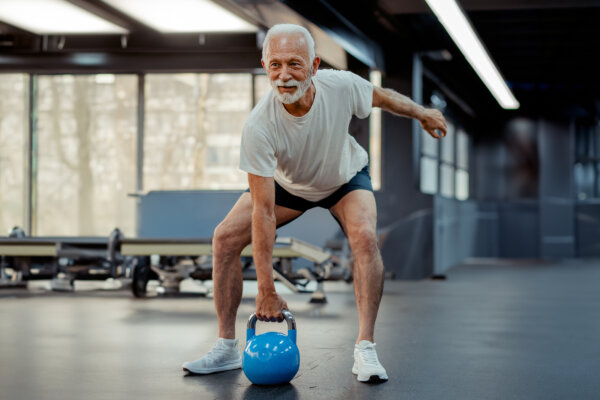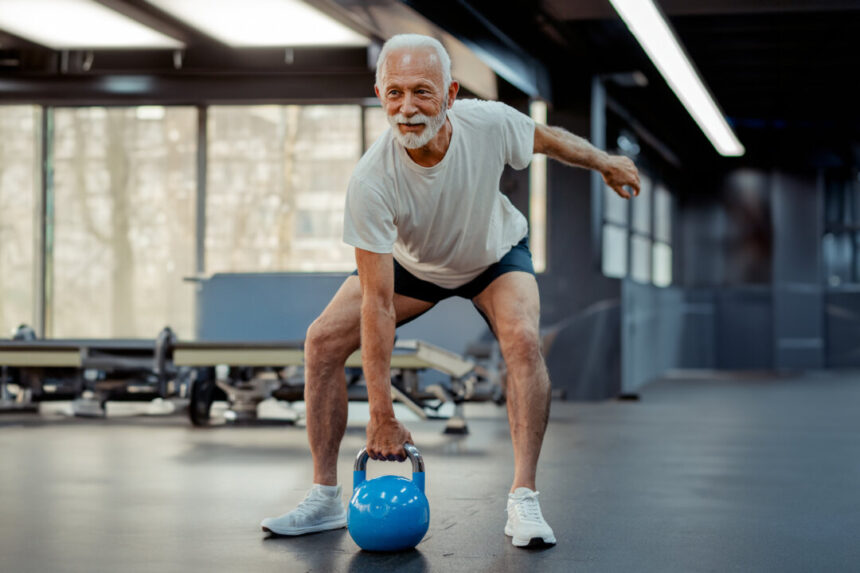
Starting the recovery process before surgery or serious illness in the gym can lead to faster and smoother outcomes, according to research.
Studies have shown that patients who build muscle before undergoing surgery, chemotherapy, or other medical treatments experience quicker recovery times and fewer complications. With a shift towards proactive health in modern medicine, building muscle before treatment has become essential for achieving optimal recovery and outcomes.
The Importance of Building Muscle
Surgery places significant stress on the body, leading to hormonal responses that trigger muscle breakdown. Dr. Derek Papp, an orthopedic surgeon, explained that cortisol release during surgery initiates this process. Immobility post-surgery further accelerates muscle atrophy.
“Surgical stress causes muscle mass and strength loss,” said Robert Wolfe, an expert in muscle metabolism. “This is especially challenging for older individuals who struggle to regain lost muscle mass.”
During critical illness or severe injury, the body’s demand for amino acids increases, drawn from muscle breakdown. These amino acids play a crucial role in immune function, wound healing, and recovery. Without sufficient muscle mass to provide these essential nutrients, recovery can be hindered.
Prehabilitation for Better Recovery
Preparing the body before surgery through prehabilitation can positively impact the recovery process. This involves targeted exercises to build muscle and enhance physical resilience, enabling patients to better cope with the stress of medical procedures.
“Think of it as building a reserve,” Papp explained. “Stronger muscles prior to surgery better prepare you for the physical demands of recovery. It’s like having armor in battle.”
Aside from physical benefits, prehabilitation also positively impacts mental health, boosting confidence and reducing anxiety, which can aid recovery.
Building Strength for Cancer Treatment
Prehabilitation is not only important for surgery but also for patients undergoing chemotherapy and radiation therapy.
Cancer treatments often lead to weight loss, including muscle loss, known as cancer cachexia. Focusing on muscle strength helps patients endure treatment better, leading to faster recovery and improved outcomes.
Studies have shown that patients who engage in prehabilitation before chemotherapy experience fewer side effects and quicker recovery between treatment cycles.
“Prehabilitation gives patients a sense of control during uncertain times,” said Scott Capozza, a physical therapist specializing in oncology. “It allows them to actively contribute to their strength and resilience as they undergo treatment.”
“Every patient can benefit from prehabilitation,” Capozza emphasized.
Building Muscle Strength During Injury or Illness
Building muscle strength can be challenging when dealing with illness or injury.
During these times, modified exercises and a cautious approach may be necessary to ensure patients are as strong as possible for upcoming treatments. Strategies can be tailored to help patients build strength even in challenging circumstances.
Adapting for Illness or Injury
If one part of the body is injured, focus on strengthening the areas that are still functional.
For example, if leg mobility is limited, concentrate on upper-body exercises like seated presses or arm curls. If the upper body is restricted, focus on lower-body movements such as leg presses or seated leg extensions.
Using Resistance Bands for Gentle Strength Training
Resistance bands provide a low-impact way to build muscle without straining joints or injured areas. They are effective for targeting smaller muscle groups or providing a gentle workout. Starting with light resistance and gradually increasing as strength improves is recommended.
Importance of Core Stability
Core strength is crucial for stability and recovery. Exercises like planks, bridges, or leg lifts, whether done seated or standing, help stabilize the torso, improve posture, and reduce injury risk during recovery.
“Core strength is essential for healing,” Capozza emphasized. “The core muscles support the entire body, especially during recovery.”
Functional Strength Training
Strength training can be done without the need for a gym.
Utilize Everyday Items for Home Workouts
Home workouts using simple items like chairs or stairs can be effective in preparing for recovery after surgery. Exercises like sit-to-stand, step-ups, and reaching and lifting movements mimic daily tasks and improve strength and coordination.
Focus on Gradual Progression
Starting with lighter weights, fewer repetitions, or easier movements helps prevent injuries and allows muscles to adapt. It is essential to increase intensity gradually as strength improves. Consistency in exercise is more important than intensity.
Customize Exercises to Individual Needs
Exercises should be tailored to each person’s physical condition. Low-impact movements are crucial for those with joint pain, while individuals with limited mobility can perform seated or supported exercises. Breaking up the workout throughout the day is also an option.
Give Importance to Recovery
Rest and recovery are essential for muscle repair and growth, especially for individuals with underlying health issues or injuries. Proper recovery reduces the risk of overtraining and ensures muscles are ready for the next workout.
Enhance Muscle Growth with Nutrition
Prioritize nutrition, especially protein-rich foods like lean meats, fish, eggs, beans, and tofu to support muscle growth. Essential amino acids are beneficial for building muscle and can be obtained through diet or supplements, particularly for individuals with reduced appetite.
Before starting a strength training program, consult with a physical therapist or healthcare provider to create a personalized plan that prepares your body for surgery or treatment.
By incorporating strength training into your pre-surgery routine, you can improve your physical resilience and actively engage in the recovery process.
If prehabilitation is not discussed by your medical provider, feel empowered to advocate for it to enhance your recovery journey.





